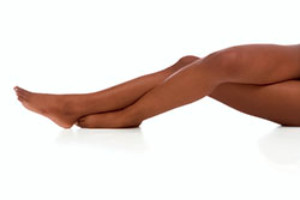August 2020
Foot Care for the Elderly
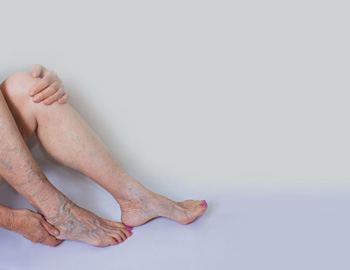 The feet are the foundation of our bodies, and as such, caring for the feet is very important. This is especially true for older people, who are more prone to various foot problems, such as dry skin, calluses, corns, blisters, ingrown toenails, and infections. A daily foot care routine can help prevent some of these conditions. Each day, clean both feet with warm water and then dry them thoroughly, including the areas between the toes, to avoid bacterial and fungal infections. Apply lotion to the feet to prevent dryness. Trim toenails straight across and not too close to the nail bed to minimize the risk of developing an ingrown toenail. Complete light daily exercise and wear shoes when walking to strengthen the feet and prevent injury. For more information on caring for elderly feet, consult with a podiatrist.
The feet are the foundation of our bodies, and as such, caring for the feet is very important. This is especially true for older people, who are more prone to various foot problems, such as dry skin, calluses, corns, blisters, ingrown toenails, and infections. A daily foot care routine can help prevent some of these conditions. Each day, clean both feet with warm water and then dry them thoroughly, including the areas between the toes, to avoid bacterial and fungal infections. Apply lotion to the feet to prevent dryness. Trim toenails straight across and not too close to the nail bed to minimize the risk of developing an ingrown toenail. Complete light daily exercise and wear shoes when walking to strengthen the feet and prevent injury. For more information on caring for elderly feet, consult with a podiatrist.
Proper foot care is something many older adults forget to consider. If you have any concerns about your feet and ankles, contact Dr. Lee R. Stein from Lake Shore Foot & Ankle, PC. Our doctor can provide the care you need to keep you pain-free and on your feet.
The Elderly and Their Feet
As we age we start to notice many changes in our body, but the elder population may not notice them right away. Medical conditions may prevent the elderly to take notice of their foot health right away. Poor vision is a lead contributor to not taking action for the elderly.
Common Conditions
- Neuropathy – can reduce feeling in the feet and can hide many life-threatening medical conditions.
- Reduced flexibility – prevents the ability of proper toenail trimming, and foot cleaning. If left untreated, it may lead to further medical issues.
- Foot sores – amongst the older population can be serious before they are discovered. Some of the problematic conditions they may face are:
- Gouging toenails affecting nearby toe
- Shoes that don’t fit properly
- Pressure sores
- Loss of circulation in legs & feet
- Edema & swelling of feet and ankles
Susceptible Infections
Diabetes and poor circulation can cause general loss of sensitivity over the years, turning a simple cut into a serious issue.
If you have any questions please feel free to contact one of our offices located in Chicago, Highland Park, and Uptown, IL . We offer the newest diagnostic and treatment technologies for all your foot and ankle needs.
What Are the Symptoms of Athlete’s Foot?
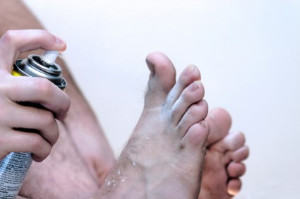 The medical condition that is known as athlete’s foot is common among many people, and is not limited to athletes. It is caused by a fungal infection, and symptoms can be seen on the bottom of the foot or between the toes. It can generally cause severe itchiness, and the skin may become red and blistered. The fungus that causes athlete’s foot lives and thrives in warm and moist environments, which often include public swimming pools, locker rooms, and surrounding areas. Mild relief may be found when an antifungal powder is applied. For recurring or severe cases of this condition, it is strongly recommended that you are under the care of a podiatrist who can effectively treat athlete’s foot.
The medical condition that is known as athlete’s foot is common among many people, and is not limited to athletes. It is caused by a fungal infection, and symptoms can be seen on the bottom of the foot or between the toes. It can generally cause severe itchiness, and the skin may become red and blistered. The fungus that causes athlete’s foot lives and thrives in warm and moist environments, which often include public swimming pools, locker rooms, and surrounding areas. Mild relief may be found when an antifungal powder is applied. For recurring or severe cases of this condition, it is strongly recommended that you are under the care of a podiatrist who can effectively treat athlete’s foot.
Athlete’s Foot
Athlete’s foot is often an uncomfortable condition to experience. Thankfully, podiatrists specialize in treating athlete’s foot and offer the best treatment options. If you have any questions about athlete’s foot, consult with Dr. Lee R. Stein from Lake Shore Foot & Ankle, PC. Our doctor will assess your condition and provide you with quality treatment.
What Is Athlete’s Foot?
Tinea pedis, more commonly known as athlete’s foot, is a non-serious and common fungal infection of the foot. Athlete’s foot is contagious and can be contracted by touching someone who has it or infected surfaces. The most common places contaminated by it are public showers, locker rooms, and swimming pools. Once contracted, it grows on feet that are left inside moist, dark, and warm shoes and socks.
Prevention
The most effective ways to prevent athlete’s foot include:
- Thoroughly washing and drying feet
- Avoid going barefoot in locker rooms and public showers
- Using shower shoes in public showers
- Wearing socks that allow the feet to breathe
- Changing socks and shoes frequently if you sweat a lot
Symptoms
Athlete’s foot initially occurs as a rash between the toes. However, if left undiagnosed, it can spread to the sides and bottom of the feet, toenails, and if touched by hand, the hands themselves. Symptoms include:
- Redness
- Burning
- Itching
- Scaly and peeling skin
Diagnosis and Treatment
Diagnosis is quick and easy. Skin samples will be taken and either viewed under a microscope or sent to a lab for testing. Sometimes, a podiatrist can diagnose it based on simply looking at it. Once confirmed, treatment options include oral and topical antifungal medications.
If you have any questions, please feel free to contact one of our offices located in Chicago, Highland Park, and Uptown, IL . We offer the newest diagnostic and treatment technologies for all your foot care needs.
Stress Fractures and Their Impact on the Feet
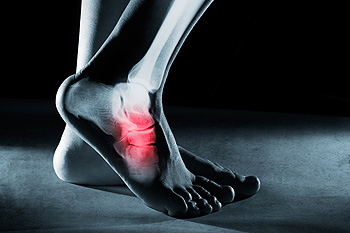 Athletes, or those who regularly partake in sporting activities may run the risk of getting a foot or lower extremity injury. One common sports injury is known as a stress fracture. Stress fractures can occur due to overuse, or repetitive actions that may cause strain for the body and create a small crack in the bone. To help prevent this type of injury, it’s important to make sure that you use the proper equipment and footwear when training. Getting proper nutrition and slowly increasing the difficulty of your training are important factors in maintaining a healthy exercise routine, as well as in preventing overuse. For more advice on how to prevent sports injuries like stress fractures, please consult with a podiatrist.
Athletes, or those who regularly partake in sporting activities may run the risk of getting a foot or lower extremity injury. One common sports injury is known as a stress fracture. Stress fractures can occur due to overuse, or repetitive actions that may cause strain for the body and create a small crack in the bone. To help prevent this type of injury, it’s important to make sure that you use the proper equipment and footwear when training. Getting proper nutrition and slowly increasing the difficulty of your training are important factors in maintaining a healthy exercise routine, as well as in preventing overuse. For more advice on how to prevent sports injuries like stress fractures, please consult with a podiatrist.
Sports related foot and ankle injuries require proper treatment before players can go back to their regular routines. For more information, contact Dr. Lee R. Stein of Lake Shore Foot & Ankle, PC. Our doctor can provide the care you need to keep you pain-free and on your feet.
Sports Related Foot and Ankle Injuries
Foot and ankle injuries are a common occurrence when it comes to athletes of any sport. While many athletes dismiss the initial aches and pains, the truth is that ignoring potential foot and ankle injuries can lead to serious problems. As athletes continue to place pressure and strain the area further, a mild injury can turn into something as serious as a rupture and may lead to a permanent disability. There are many factors that contribute to sports related foot and ankle injuries, which include failure to warm up properly, not providing support or wearing bad footwear. Common injuries and conditions athletes face, including:
- Plantar Fasciitis
- Plantar Fasciosis
- Achilles Tendinitis
- Achilles Tendon Rupture
- Ankle Sprains
Sports related injuries are commonly treated using the RICE method. This includes rest, applying ice to the injured area, compression and elevating the ankle. More serious sprains and injuries may require surgery, which could include arthroscopic and reconstructive surgery. Rehabilitation and therapy may also be required in order to get any recovering athlete to become fully functional again. Any unusual aches and pains an athlete sustains must be evaluated by a licensed, reputable medical professional.
If you have any questions please feel free to contact one of our offices located in Chicago, Highland Park, and Uptown, IL . We offer the newest diagnostic and treatment technologies for all your foot and ankle needs.
Plantar Warts Can Be Treated!
An Overview of Tarsal Tunnel Syndrome
Tarsal tunnel syndrome is a condition that causes pain in the ankle and foot. It is caused by compression or damage to the posterior tibial nerve, which runs down the back of the calf, through the tarsal tunnel located near the heel, and down into the sole of the foot. Other than pain, the most common symptom of tarsal tunnel syndrome is a burning or tingling sensation when walking or standing, especially along the inner side of the ankle, that usually goes away with rest. If you are experiencing any of these symptoms, it is suggested that you visit a podiatrist who can diagnose and treat tarsal tunnel syndrome. Potential treatments might include corticosteroid injections, prescription orthotics, anti-inflammatory medications, and, in severe cases, surgery to relieve the pressure on the posterior tibial nerve.
Tarsal tunnel syndrome can be very uncomfortable to live with. If you are experiencing tarsal tunnel syndrome, contact Dr. Lee R. Stein of Lake Shore Foot & Ankle, PC. Our doctor can provide the care you need to keep you pain-free and on your feet.
Tarsal Tunnel Syndrome
Tarsal tunnel syndrome, which can also be called tibial nerve dysfunction, is an uncommon condition of misfiring peripheral nerves in the foot. The tibial nerve is the peripheral nerve in the leg responsible for sensation and movement of the foot and calf muscles. In tarsal tunnel syndrome, the tibial nerve is damaged, causing problems with movement and feeling in the foot of the affected leg.
Common Cause of Tarsal Tunnel Syndrome
- Involves pressure or an injury, direct pressure on the tibial nerve for an extended period of time, sometimes caused by other body structures close by or near the knee.
- Diseases that damage nerves, including diabetes, may cause tarsal tunnel syndrome.
- At times, tarsal tunnel syndrome can appear without an obvious cause in some cases.
The Effects of Tarsal Tunnel Syndrome
- Different sensations, an afflicted person may experience pain, tingling, burning or other unusual sensations in the foot of the affected leg.
- The foot muscles, toes and ankle become weaker, and curling your toes or flexing your foot can become difficult.
- If condition worsens, infections and ulcers may develop on the foot that is experiencing the syndrome.
A physical exam of the leg can help identify the presence of tarsal tunnel syndrome. Medical tests, such as a nerve biopsy, are also used to diagnose the condition. Patients may receive physical therapy and prescriptive medication. In extreme cases, some may require surgery.
If you have any questions please feel free to contact one of our offices located in Chicago, Highland Park, and Uptown, IL . We offer the newest diagnostic and treatment technologies for all your foot and ankle needs.
Can Running Injuries Be Prevented?
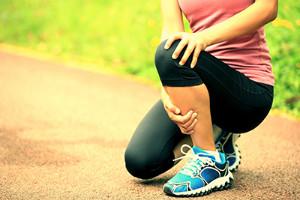 The majority of runners recognize the importance of properly warming up and cooling down before and after running activities. The methods that can be implemented which may lower the risk of injury can include limiting the mileage of your runs to 45 miles per week, and new runners can alternate between running and walking. It is beneficial to run on even surfaces, in addition to changing the running shoes approximately every 500 miles. Many runners perform specific stretches that can improve the overall strength of the body, and may help to properly prepare the body for running. A hamstring stretch is practiced while sitting down with one leg that is out in front of you. The other leg is bent, while leaning forward at the waist. This is generally helpful in stretching the back of the leg. For additional information about how running injuries can affect the feet and possible prevention techniques, please speak with a podiatrist.
The majority of runners recognize the importance of properly warming up and cooling down before and after running activities. The methods that can be implemented which may lower the risk of injury can include limiting the mileage of your runs to 45 miles per week, and new runners can alternate between running and walking. It is beneficial to run on even surfaces, in addition to changing the running shoes approximately every 500 miles. Many runners perform specific stretches that can improve the overall strength of the body, and may help to properly prepare the body for running. A hamstring stretch is practiced while sitting down with one leg that is out in front of you. The other leg is bent, while leaning forward at the waist. This is generally helpful in stretching the back of the leg. For additional information about how running injuries can affect the feet and possible prevention techniques, please speak with a podiatrist.
All runners should take extra precaution when trying to avoid injury. If you have any concerns about your feet, contact Dr. Lee R. Stein of Lake Shore Foot & Ankle, PC. Our doctor will treat your foot and ankle needs.
How to Prevent Running Injuries
There are a lot of mistakes a runner can make prior to a workout that can induce injury. A lot of athletes tend to overstretch before running, instead of saving those workouts for a post-run routine. Deep lunges and hand-to-toe hamstring pulls should be performed after a workout instead of during a warmup. Another common mistake is jumping into an intense routine before your body is physically prepared for it. You should try to ease your way into long-distance running instead of forcing yourself to rush into it.
More Tips for Preventing Injury
- Incorporate Strength Training into Workouts - This will help improve the body’s overall athleticism
- Improve and Maintain Your Flexibility – Stretching everyday will help improve overall performance
- “Warm Up” Before Running and “Cool Down” Afterward – A warm up of 5-10 minutes helps get rid of lactic acid in the muscles and prevents delayed muscle soreness
- Cross-Training is Crucial
- Wear Proper Running Shoes
- Have a Formal Gait Analysis – Poor biomechanics can easily cause injury
If you have any questions, please feel free to contact one of our offices located in Chicago, Highland Park, and Uptown, IL . We offer the newest diagnostic and treatment technologies for all your foot care needs.
Blog Archives
- April 2025
- March 2025
- February 2025
- January 2025
- December 2024
- November 2024
- October 2024
- September 2024
- August 2024
- July 2024
- June 2024
- May 2024
- April 2024
- March 2024
- February 2024
- January 2024
- December 2023
- November 2023
- October 2023
- September 2023
- August 2023
- July 2023
- June 2023
- May 2023
- April 2023
- March 2023
- February 2023
- January 2023
- December 2022
- November 2022
- October 2022
- September 2022
- August 2022
- July 2022
- June 2022
- May 2022
- April 2022
- March 2022
- February 2022
- January 2022
- December 2021
- November 2021
- October 2021
- September 2021
- August 2021
- July 2021
- June 2021
- May 2021
- April 2021
- March 2021
- February 2021
- January 2021
- December 2020
- November 2020
- October 2020
- September 2020
- August 2020
- July 2020
- June 2020
- May 2020
- April 2020
- March 2020
- February 2020
- January 2020
- December 2019
- November 2019
- October 2019
- September 2019
- August 2019
- July 2019
- June 2019
- May 2019
- April 2019
- March 2019
- February 2019
- January 2019
- December 2018
- November 2018
- October 2018
- September 2018
- August 2018
- July 2018




